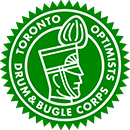
March On! ...the history of the
Toronto Optimists Drum & Bugle Corps
Toronto, Ontario, Canada
Toronto Optimists
A Brief Synopsis
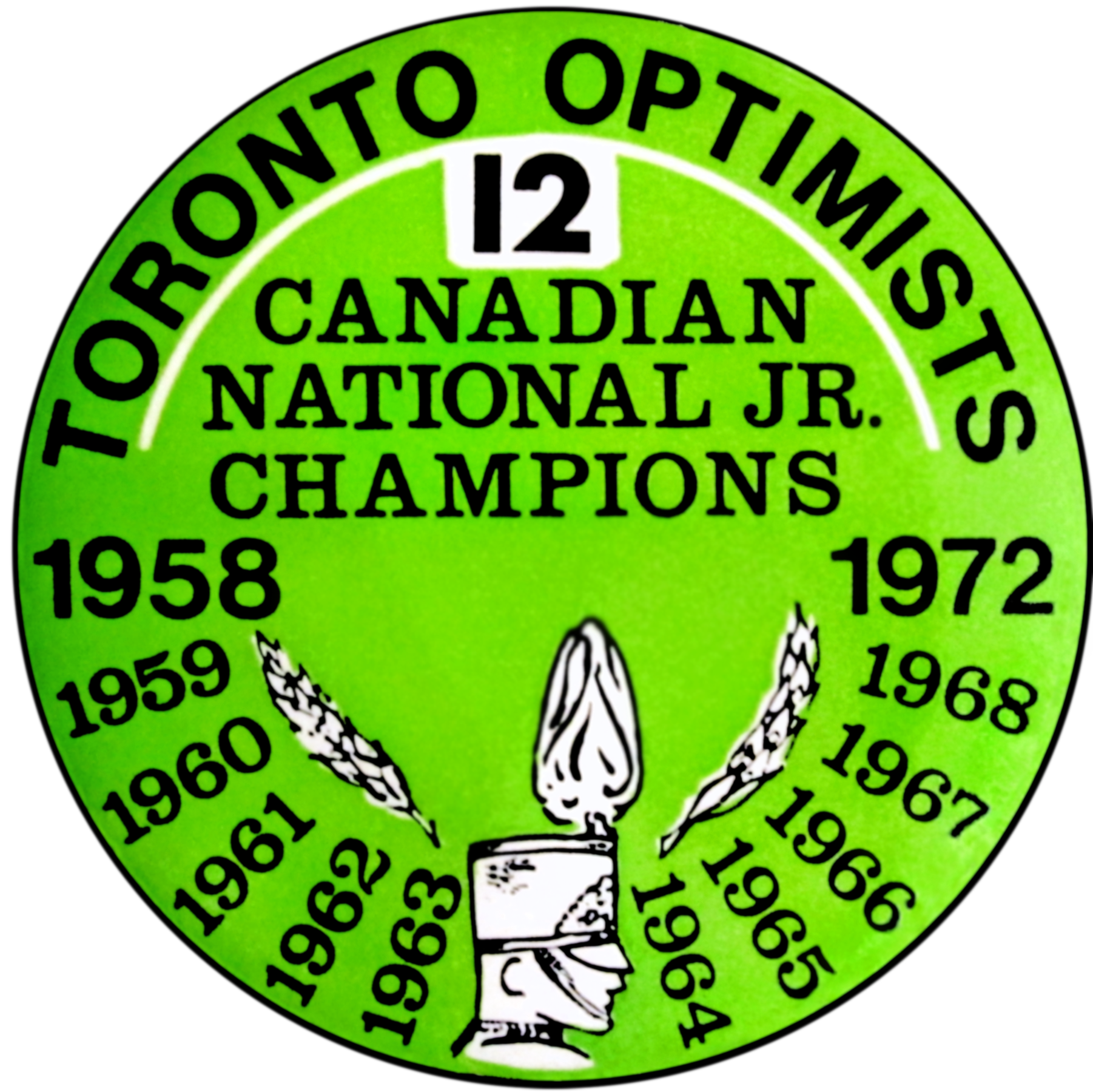
At the end of the 1957 season Opti-Corps, a Junior "B" drum corps from Toronto, decided to move up to Junior "A", the top class in Canadian Drum Corps. At that time, the Preston Scout House Band was the reigning Canadian champion. This group of upstarts, now known as the Toronto Optimists, was determined to garner that crown for themselves.
The 1958 competitive year for the Optimists began with losses to Scout House but ended with a win – at Nationals! That win was just the beginning. The Toronto Optimists quickly became the dominant force in Canadian drum corps and maintained that position for many years.
At the end of 1975 the corps disbanded and merged with the Seneca Princemen to create a new corps – the Seneca Optimists. During their eighteen years of competition the Toronto Optimists had many wins and losses. Included in the "win" category are 12 Canadian National titles! Eleven of those National titles, from 1958 – 1968, were consecutive!! To this day, no other corps, Canadian or American, has matched that record.
This page offers a very brief overview of the corps. The links at the bottom of this page offer much more detailed information.
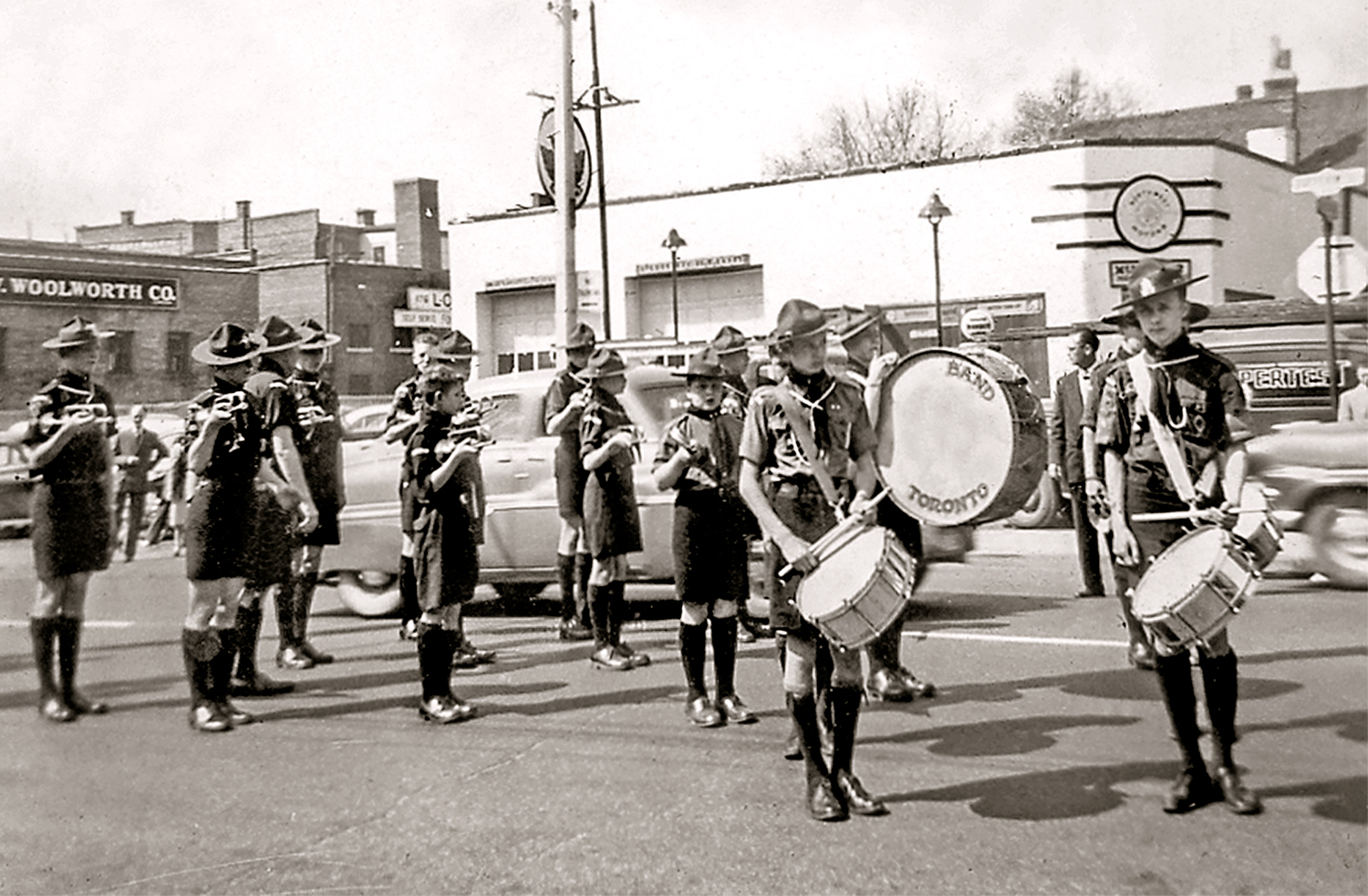
Historical Background
The Optimists trace their roots to the 18th Toronto Boy Scout Troop, founded by Mr. Bud Parker in 1952. By 1955 the boys were too old for Scouts so they left Scouting to form the Davenport Trumpet Band with Mr. Bud Parker as Director and Mr. Al Baggs as Business Manager. Mr. Baggs managed to convince the Downtown Toronto Optimist Club to sponsor this fledgling group. The new groups was affectionately known as Opti-Corps.
In 1956 Opti-Corps competed in the Novice Class Championship and won first place. The band not only moved up a level in 1957 but managed to win the Junior "B" Championship. For 1958 they decided to move to Junior "A", the top competitive category, and compete as the Toronto Optimists.
Barry Bell and Lorne Ferrazzutti had been members of the Western Tech Trumpet Band. They were also instructors of the Danforth Tech Drum and Bugle Corps. At the end of 1957 Danforth Tech dropped support of the corps. Mr. Baggs, by now the Corps Director, recruited Barry and Lorne for this new corps. A number of former Danforth Tech and Western Tech members joined Barry and Lorne in this new corps.
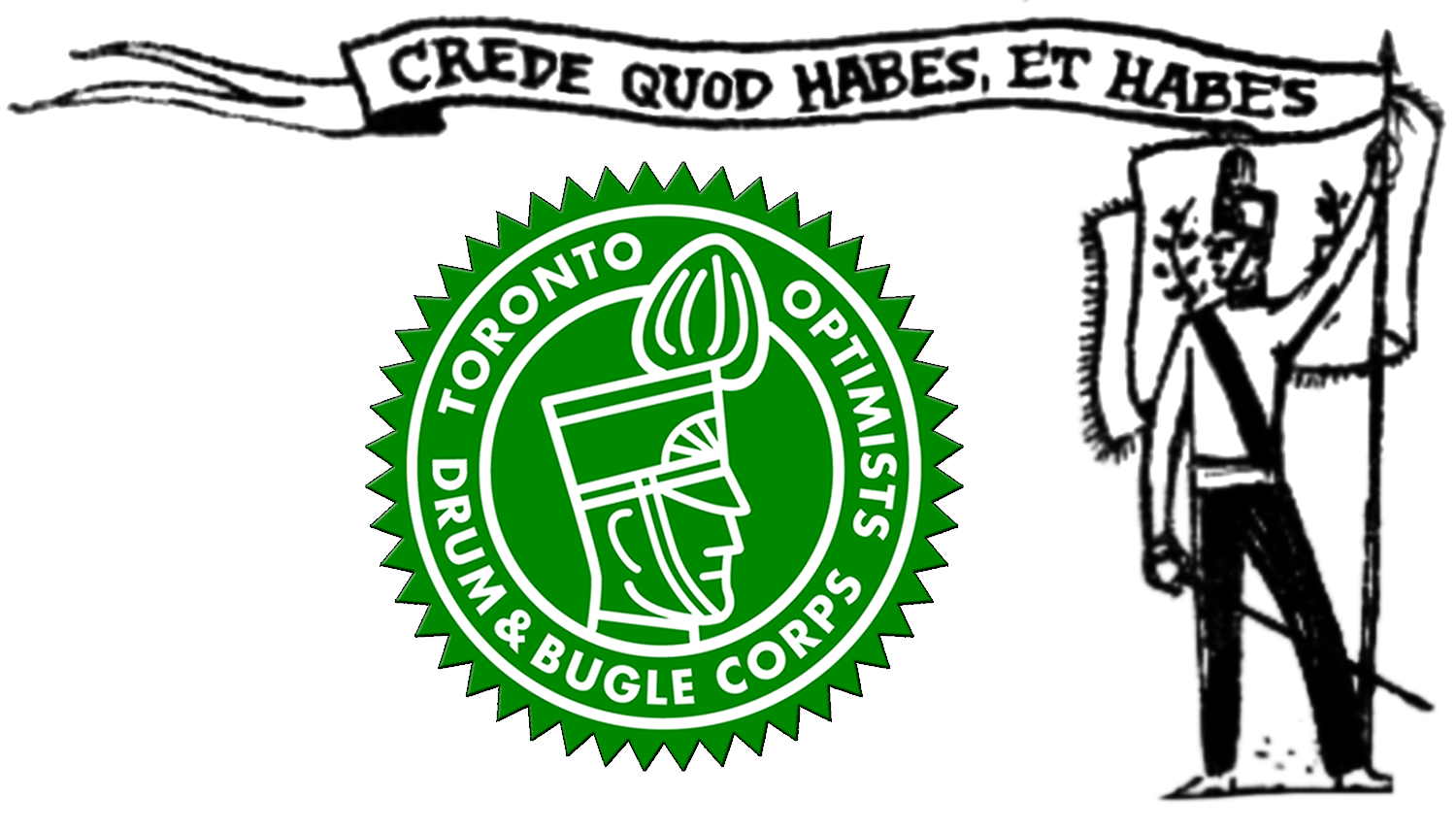
The Beginning
When word got out that a new Corps was starting, people came from Leaside Lions, Don Mills Sky Raiders, St. Marys, and other established units. The first rehearsal was at Jarvis Vocation School, the corps' "home" for the next few years. Rumour has it the there were about 100 boys looking to be part of this new group! That might seem small by today's standards; however, in the late 1950s the average size of a corps was typically 30-50 members!
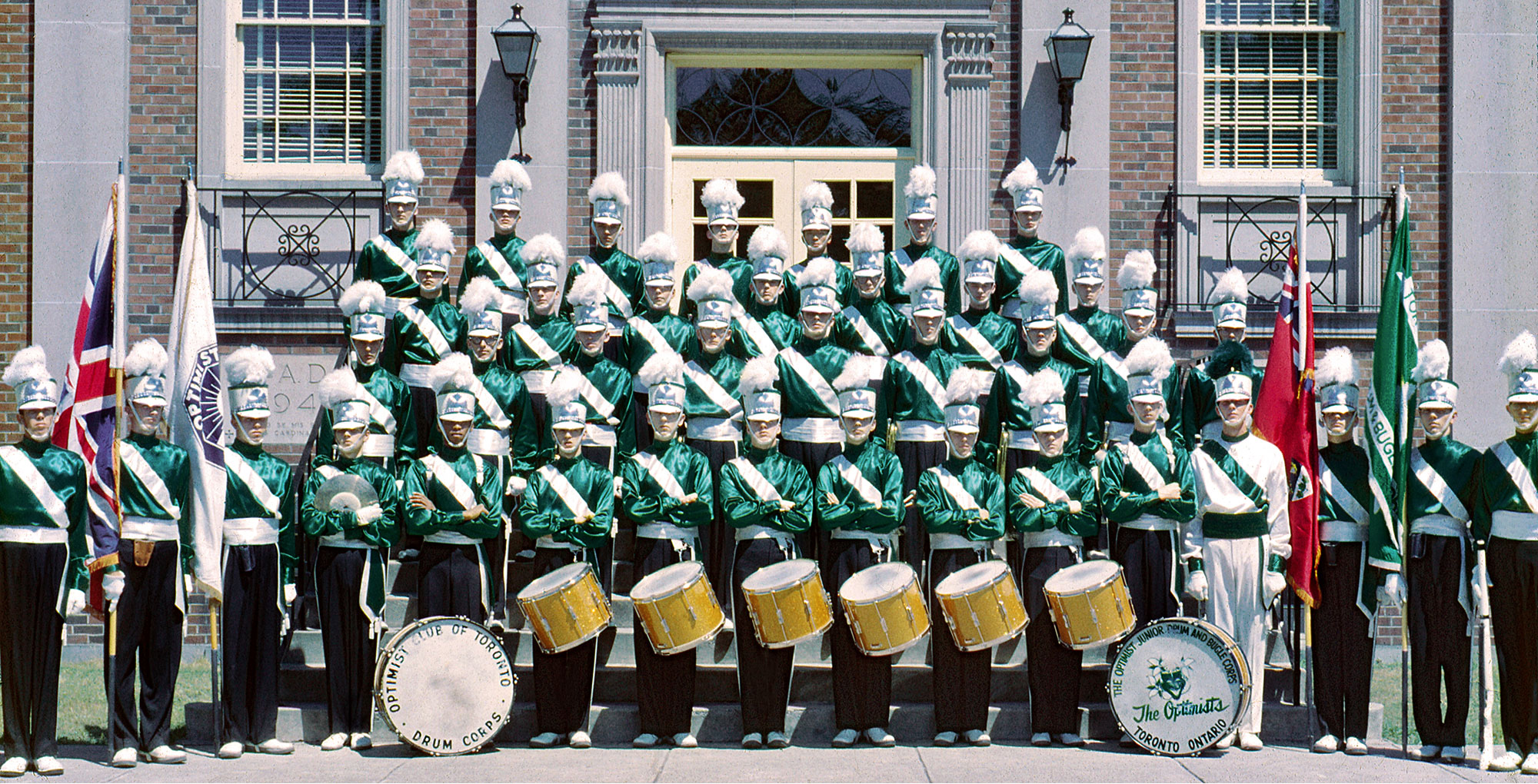
It was clear that not everyone who was at that first rehearsal would make the line. Over time many people left, perhaps as a result of other things in their lives, possibly insufficient interest in all of the work required. Who knows? In a way, this attrition was a blessing since it brought the corps size to a manageable level. The photo on the Left shows the 1958 corps on the steps of De La Salle "Oaklands". There are only 39 members.

Up to 1968
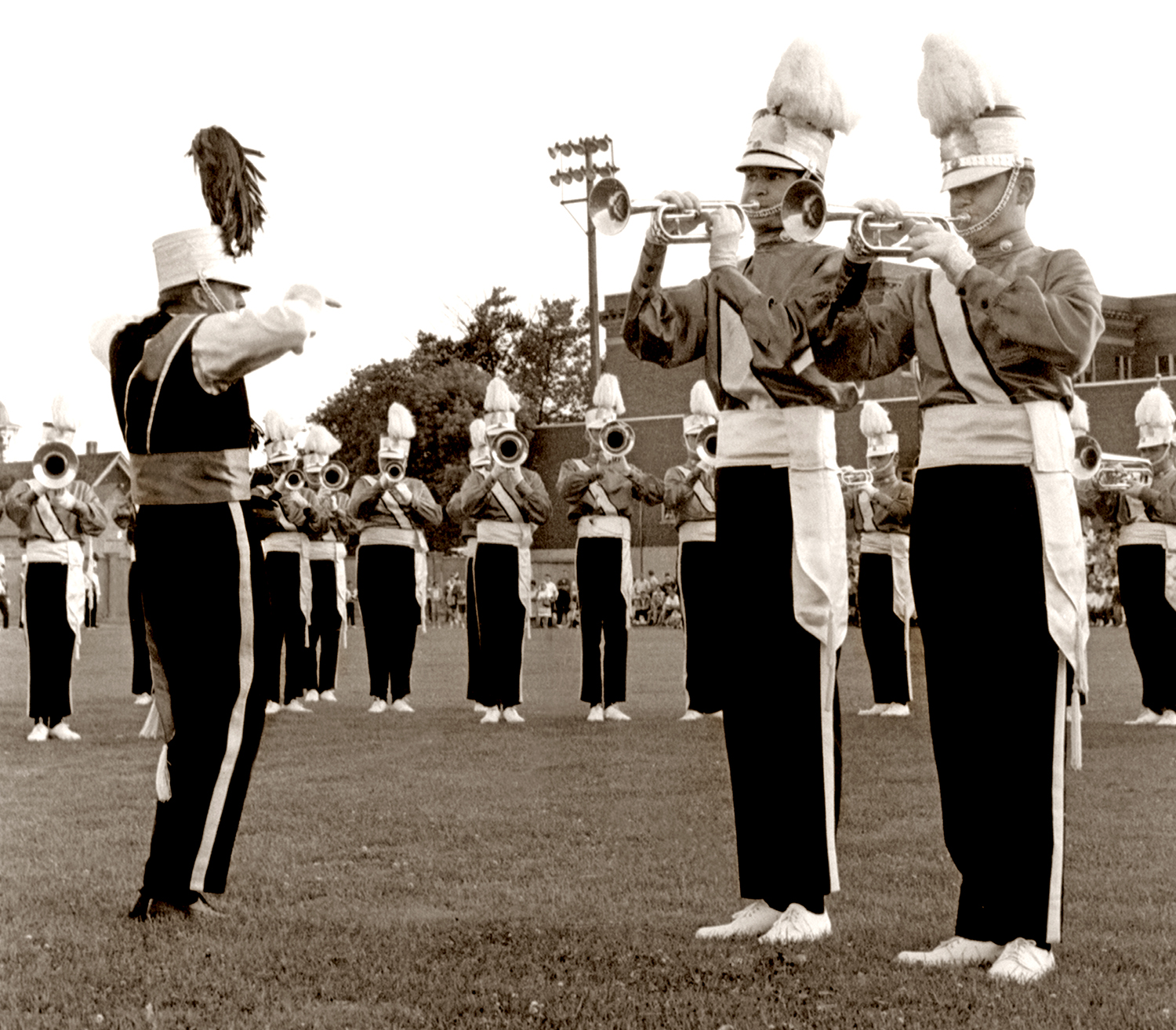
During the following years life was not always easy for the corps. On the level of personnel it seemed that every two years we'd lose large numbers of our members. We lost so many members at the end of 1963 that we almost did not field a corps in 1964. Thankfully we had a feeder corps. In the Spring management held a meeting at which a decision was made. We would compete and we would get the much-needed members from our feeder corps. In order to do that we had to drain the feeder corps and shut it down. That decision had long-term consequences but, in the moment, those kids saved our butts! No one outside the corps was aware that we had been in such dire straits.
On the competitive side, De La Salle had a very good corps in 1961 and became the first Canadian corps since 1958 to beat us. We managed to win Nationals but the margin was only 1/20th of a point! By 1966 another corps, the Cadets LaSalle from Ottawa, were looking to kick us out of first place. In both 1966 and 1967 they managed to beat us in prelims at the Nationals but we held them off in finals.
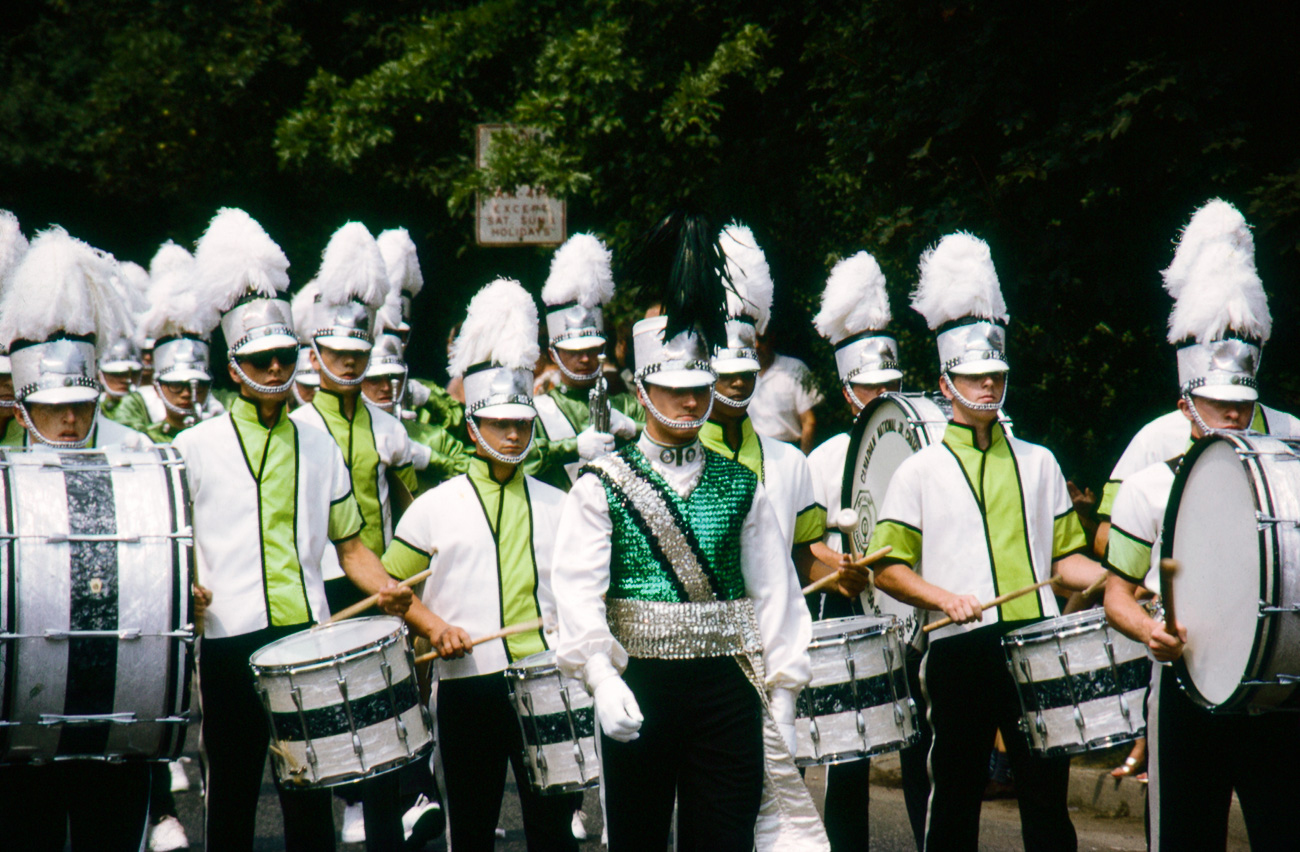
One of the challenges that arose from winning Nationals so often was that it created a "psychological" burden on our members. None of us wanted to be the corps that ended the winning streak. Each year that we won that burden became heavier. Our winning streak also affected the audience side. They began booing, hoping that another corps would win. The 1967 Nationals were in Ottawa, LaSalle's home. The boos were so loud that we could not even hear commands from our drum major. Having said that, by the end of our performance the cheers were louder than the boos.
At the end of 1967 a great many member of The Optimists aged out. In addition to age-outs we always lost members through attrition. The Bantam Optimists, our feeder corps, had been shut down in 1964 and this meant that 1968 would be a challenging year. The last time that Optimists had started a season losing to another Canadian corps was in 1958, when Scout House was king. In 1968 De La Salle started on top with Optimists in second and LaSalle in third. This lasted situation lasted until Optimists won a September contest at the Canadian National Exhibition. Optimists also won Nationals for their 11th consecutive win.
At the end of the 1968 season the Downtown Toronto Optimist Club, our sponsor since 1955, announced that they would drop their sponsorship of the corps at the end 1969. There would be money to compete in 1969 but nothing for extras, like new equipment.
A new reality
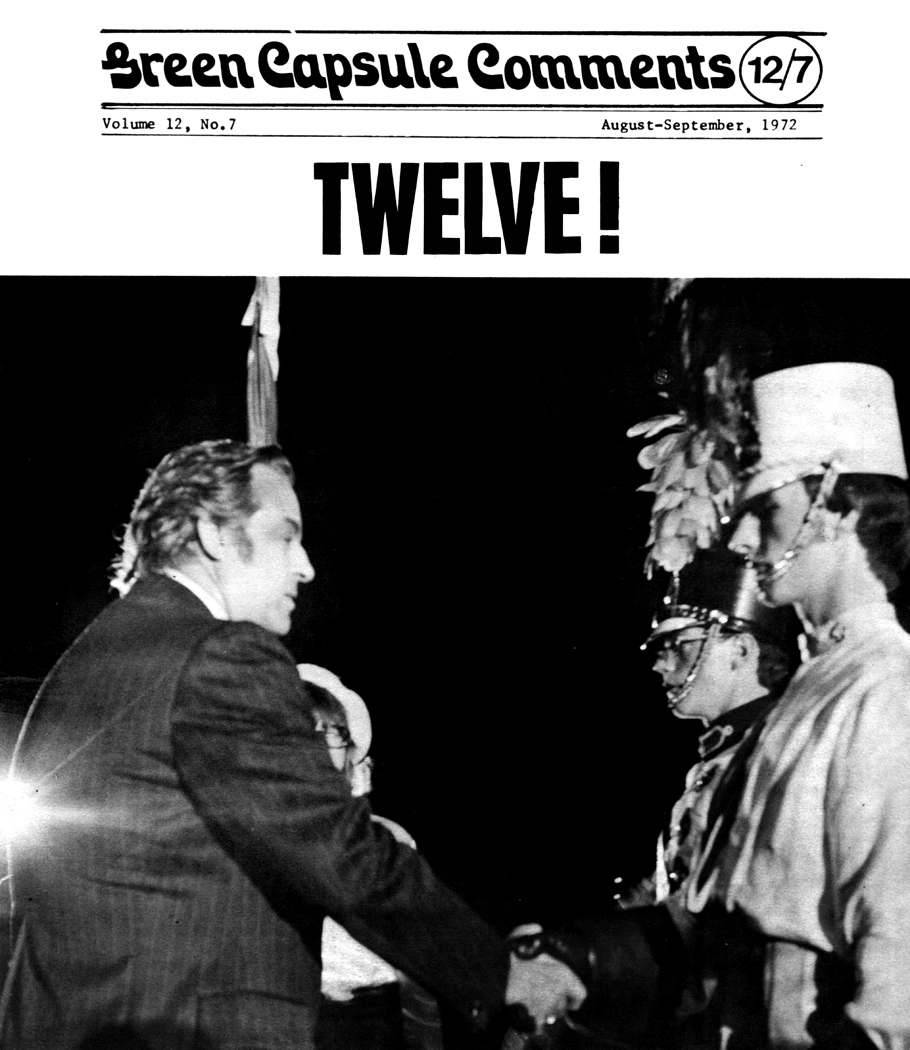
The 1969 season started like 1968, with De La Salle on top. The Optimists did their absolute best, working as hard as they could, in an attempt to create a repeat of 1968. After trailing Del all year the Optimists managed to beat them by a solid 2.3 points only five days before Nationals. This year, though, there was a different outcome at Nationals. De La Salle took first place, beating the Optimists by 1/20th of a point, the same spread by which the Optimists beat Del in 1961! De La Salle was now top-dog and the Optimists would now have to play catch-up.
If you remember, 1969 was the last year that the Downtown Toronto Optimist Club would be sponsoring the corps. Those who had marched in the Optimists loved the corps and would do everything possible to keep the corps alive. A group of former Optimists banded together to create the York-Toronto Optimist Club and the new club assumed sponsorship of the corps. As for the corps, they continued to work hard.
Both 1970 and 1971 were years of rebuilding for the Optimists. By 1972 the corps was looking very promising. They had an excellent musical repertoire as well as a great deal of potential. The 1972 season started off, much like 1968 and 1969 with De La Salle beating everyone. Once again, the tide turned in September. The day before Nationals the Optimists beat Del, in both prelims and finals, at the Big "10" contest in Hamilton, ON. The next day the Optimists won the tightest contest in the history of the Canadian Nationals. The final scores showed Toronto Optimists with 81.40, De La Salle with 81.30 and Cadets LaSalle in third place with 81.25!
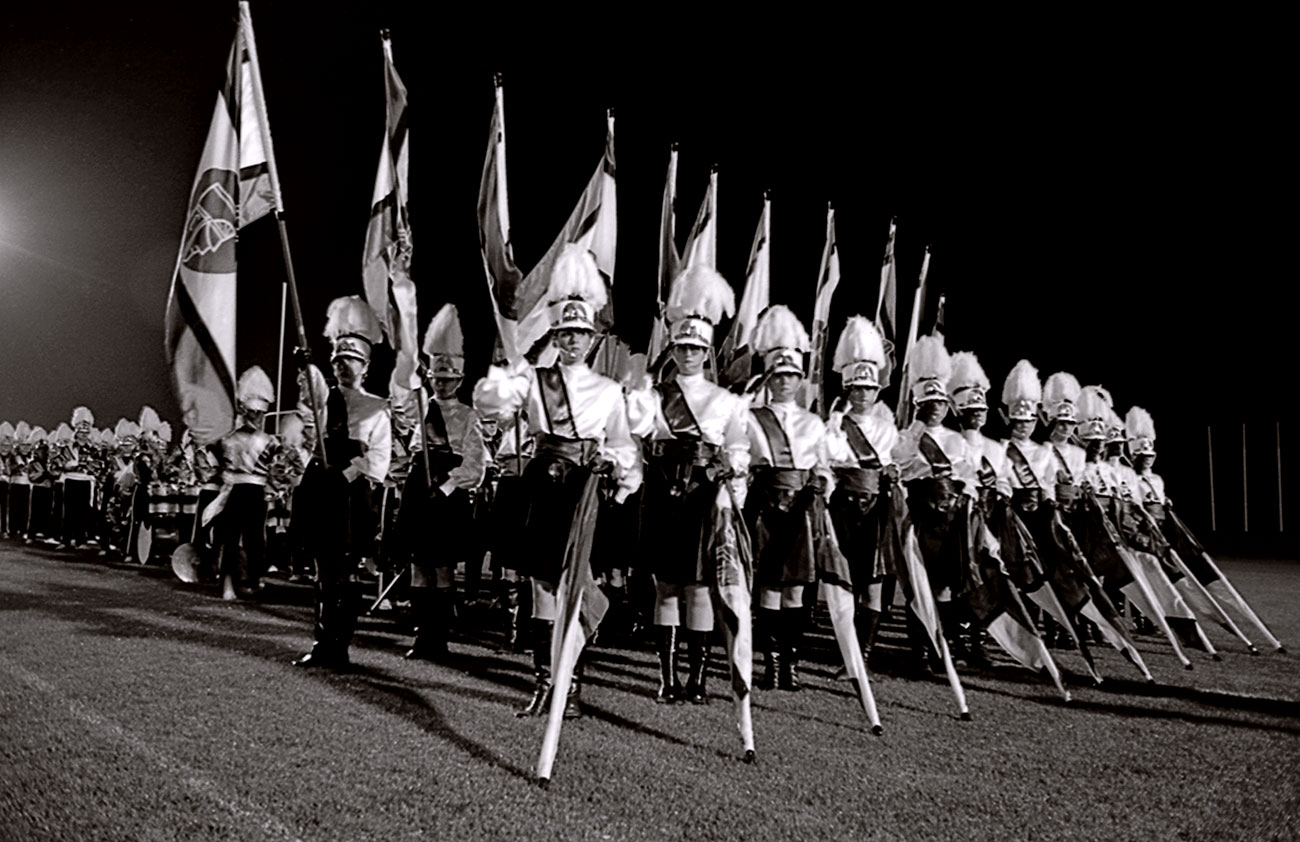
In 1973 the Optimists experienced the most serious challenge in their history. The corps had a "no drugs" policy and, at their May camp, members were told that management would resign if this rule was broken. Sadly, a number of corps members broke the rule. Both the Corps Director and the Music Director resigned, some members were expelled while others were forced to stand on the sidelines while the corps performed. This was less than a month before Nationals. It looked like the Corps might fold. Instead, they managed to pull together and finish the year. Once again, scores at Nationals were tight. De La Salle should have been the outright winner but they received penalties totaling 2.6 points. Cadets LaSalle lost 0.3 points in penalties. There was a tie for first with both De La Salle and Cadets LaSalle scoring 79.6 with the Optimists in Second place at 79.0
By 1975 DCI had become the dominant force in drum corps. It was clear that one of the requirements of competing at the top levels of DCI involved having a large corps and lots of money. The Optimists did reasonably well in 1975, beating some good corps, but they finished in 16th place at DCI prelims. Unfortunately, The Optimists had neither the money nor the members to field a DCI calibre corps and the likelihood of that changing was very slim.
At the end of 1975, after 18 years of competition and 12 National titles, the Toronto Optimists disbanded. In January of 1976, they merged with the Seneca Princemen to form a new corps, the Seneca Optimists.
For more historical information about the Toronto Optimists
- A brief history of the Scout Bands (Optimists began as a Scout Band)
- A little bit about Opti-Corps (beginning of relationship with the Downtown Toronto Optimist Club)
- Vern Johansson's story of "Our Optimists Roots" (for a brief overview of The Optimists)
- Colin Hedworth's history "From Toronto, The Optimists" (for an in-depth History of The Optimists)
- Scores from contests that included the Toronto Optimists. Although it is a work-in-progress these scores span the complete competition years for the Toronto Optimists (1958 thru 1975). This file was last updated on November 19, 2020.